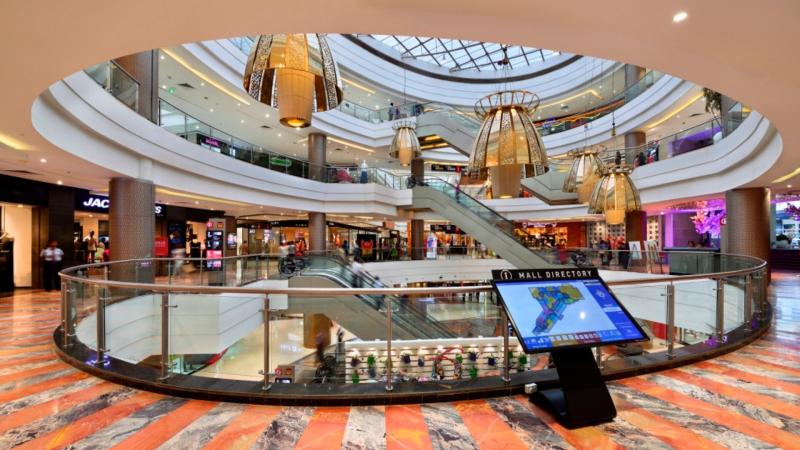
If you live in Mumbai, the humidity in the air is quick to make you all sweaty and stinky. With clothes dripping in sweat and without the comfort of an air-conditioned car, going shopping is the last thing you want to do. With bustling shopping malls mushrooming around the city, how would one go to a mall? Do people prefer driving their cars to be presentable at their destinations, or are there other modes? In a recent study, researchers at the Indian Institute of Technology Bombay (IIT Bombay), Mumbai, have explored this question to understand how Mumbaikars visit shopping malls and what drives their decision.
“Traditionally, shopping trips were not very substantial. With the change in the lifestyle in urban areas, and the availability of a large number of shopping malls that offer recreation, these trips have increased,” says Prof Gopal Patil from IIT Bombay. He is a professor at the Department of Civil Engineering at IIT Bombay and the lead author of the current study. “Hence, it is important to understand how people make travel-related choices for shopping mall trips. This information can help transport planners and decision-makers to address the needs of travellers for these trips,” he adds.
The findings of this study are published in the journal Transportation Research Part F: Traffic Psychology and Behaviour.
The researchers surveyed 650 visitors in five shopping malls across Mumbai. They used a questionnaire to gather information about the visitors' age, gender, occupation, income, car ownership and possession of a driving license. They also collected the preferred day, time and the primary purpose of the visit. Besides, the respondents were also asked about how they chose to reach the mall, the cost incurred, the total journey time, and how they planned to travel back. The study then used two statistical models to understand how each of these factors influences the visitors' decision to come to a shopping mall.
The study found that almost half of the visitors came to shopping malls for shopping, a quite obvious purpose. However, the other half was there to watch movies and spend their leisure time on other entertaining activities like playing video games. Almost 40% of those who visited the malls with their cars were there for shopping, indicating that affluent shoppers own a car and prefer using it. Most of those who were there for leisure purposes preferred to walk to the malls. The use of public transport was highest among employees in these shopping malls, for whom it was a work trip.

Figure 1: Distribution of trip purposes to shopping malls [Data source]
The age of the visitors had a significant say in transport choices. Those above 55 years mostly used cars to travel to malls, and those below 18 years used auto-rickshaws and cars. Those between 18-30 years, who tend to be physically active, chose two-wheelers or public transport. The study also found that the use of cars increased with an increase in income levels. However, the use of auto-rickshaws, which are popular in Mumbai, was comparable across all income groups. Those who had a driving licence tended to use their vehicles often to reach malls.
The study also showed that half of the visitors preferred weekends to visit malls, especially during the evenings and afternoons. Although the use of cars and auto-rickshaws remained higher during weekends and weekdays, there was an increase in the use of public transport and two-wheelers during the weekends.
The study shows about 53% of users visiting ‘shopping’ malls do so for reasons apart from shopping, indicating that the malls are likely to remain a shopping and entertainment area. This trend, the researchers say, holds good for most metros in developing countries.
Although 70% of trips in Mumbai are made by public transport, only 20% of them is for shopping malls.
“Travelling by public transport is not comfortable and often not reliable; thus, many prefer personalized vehicles. With increased income most of the households have two-wheelers, and a large number of them can afford a car,” says Prof Patil of this trend.
The findings of the study will help authorities meet the traffic and transport-related needs around shopping malls. “It will also help shopping mall owners in providing appropriate circulation and parking areas in a shopping mall,” says Prof Patil. He also offers a few suggestions on how authorities can manage the transport around shopping malls. “One suggestion is that all major stations and terminals should have modern shopping malls with all the necessary shopping and recreational facilities. Conversely, all major existing shopping malls should have direct access to public transport,” he says. Improving the quality and comfort level of public transit can also go a long way.
As a next step, the researchers plan to study the freight movements around shopping malls. As shops here need to receive their inventories and those purchased by the customers need to be transported to their residence, the fright movement is significant.
“It is necessary to quantify these quantities and analyze the behaviour of both shop owners and customers,” signs off Prof Patil.
This article has been run past the researchers, whose work is covered, to ensure accuracy.






